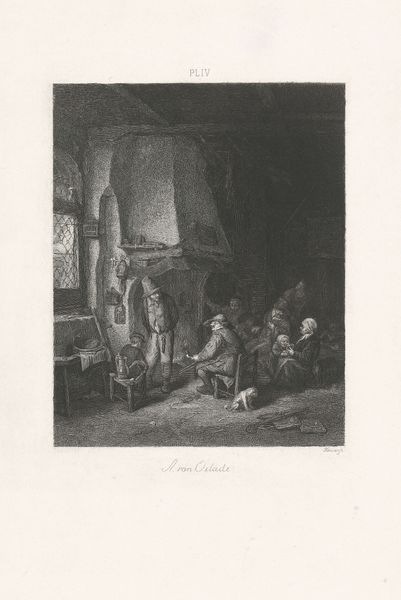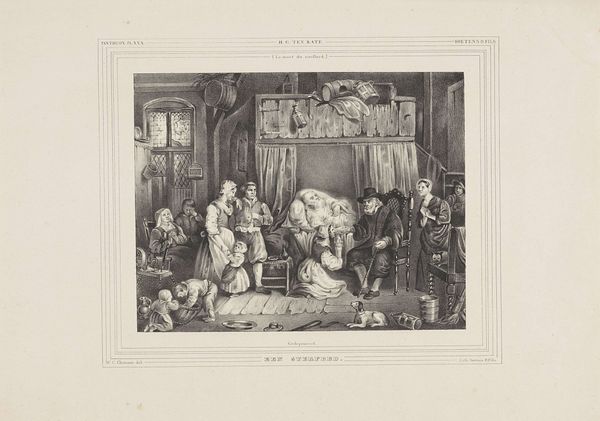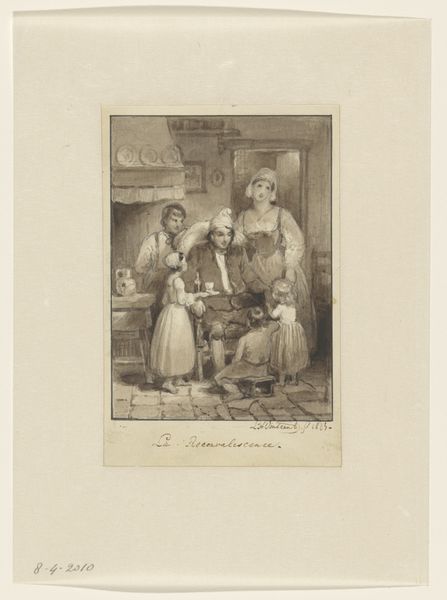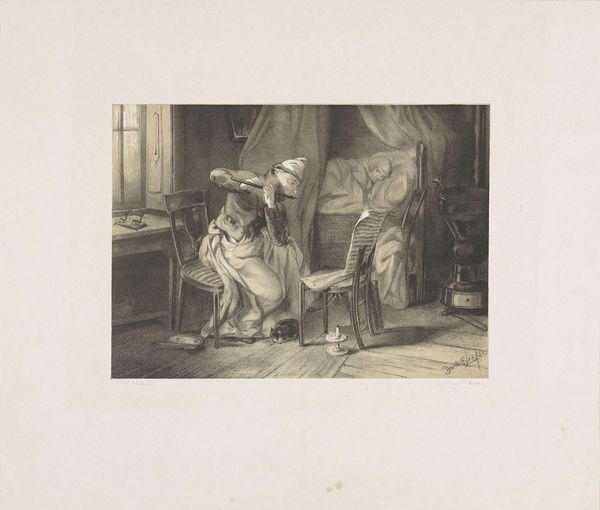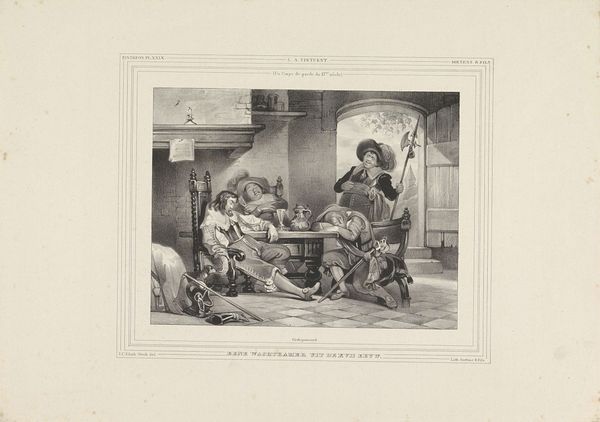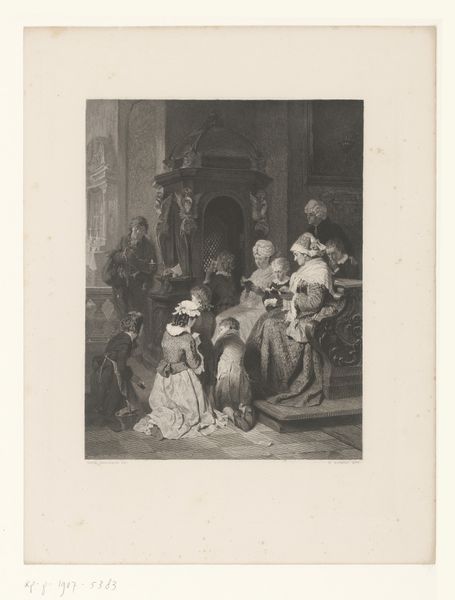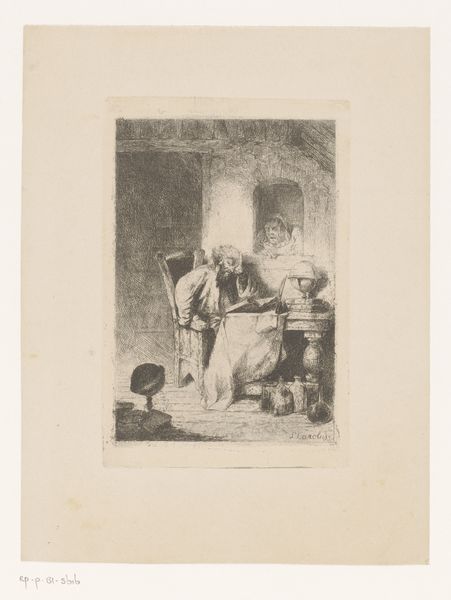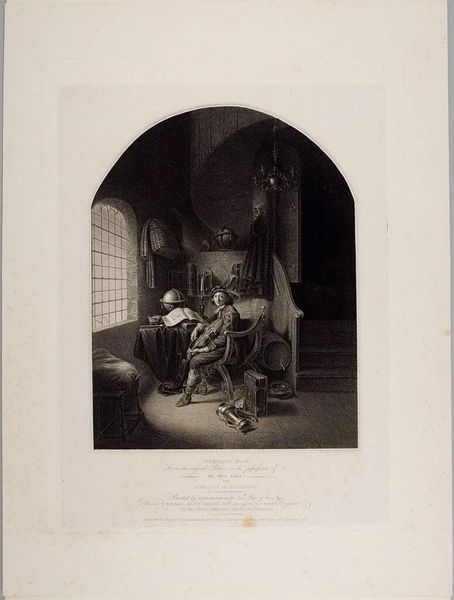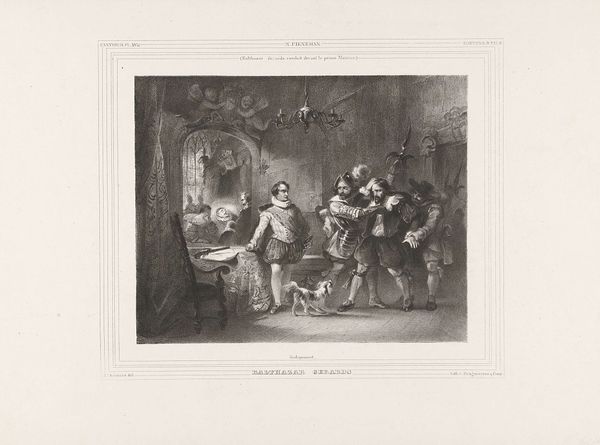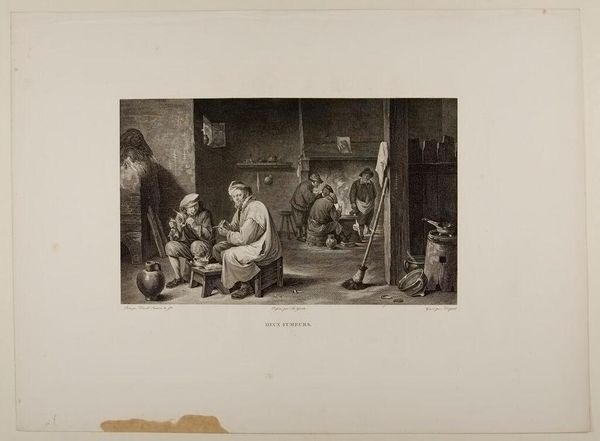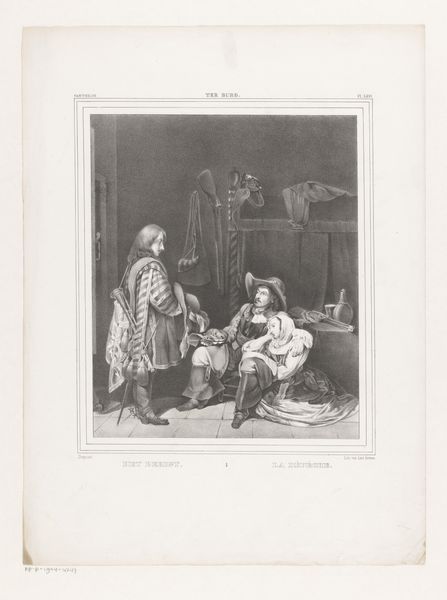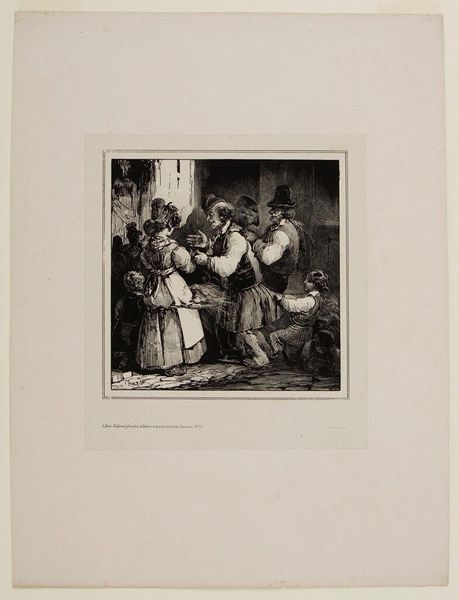
drawing, etching, intaglio, ink, pen
#
portrait
#
pencil drawn
#
drawing
#
narrative-art
#
dutch-golden-age
#
etching
#
intaglio
#
charcoal drawing
#
ink
#
pencil drawing
#
pen
#
genre-painting
Dimensions: height 418 mm, width 300 mm
Copyright: Rijks Museum: Open Domain
Curator: Welcome. Before us is "Interieur van een herberg," or "Interior of a Tavern," dating from 1832 to 1873, attributed to Wilhelmus Cornelis Chimaer van Oudendorp. It appears to be an etching or intaglio print. Editor: It has such a wonderfully theatrical quality to it! The stark contrasts and compressed space create an intimate and slightly tense atmosphere, like a stage play frozen in a single frame. Curator: Indeed. Observe how van Oudendorp manipulates light and shadow to create dramatic tension. Note, in particular, how the sharp lines delineate the characters and architectural features, and how the stark value contrasts contribute to the overall dynamism. What narrative threads do you discern? Editor: We see a trio; a tipsy fellow seated at a table, his concerned mother at his side, and a man behind who, in contrast to the other two, looks stern. The work reminds me that depictions of tavern interiors weren't just about depicting everyday life; they were often laden with moral and social commentary, especially concerning vices like overindulgence. Curator: Precisely. The genre of tavern scenes allows artists to explore ideas of social decorum and to challenge class assumptions. I would argue, too, that the somewhat chaotic arrangement of elements actually serves a very purposeful artistic function. Look closely at the placement of the figures, the staircase, and even the objects on the shelf – they are strategically arranged to create a compelling and legible composition. Editor: To what end? Is Oudendorp’s intention a social critique or a snapshot into life during the Dutch Golden Age? What do you imagine the context of the work to be and what were its influences? Curator: Well, although the artist died in 1873, I think that there's definitely an homage to seventeenth-century Dutch masters apparent, even in this black and white scene. Works from Jan Steen or Adriaen Brouwer immediately come to mind when looking at this work. The artist is attempting to emulate these works within their work through style and technique, while taking on modern political themes to create dialogue among modern society. Editor: Yes! You’re absolutely right. Looking again, you've unlocked a dimension of historical awareness I'd initially overlooked. This seemingly simple genre scene is far richer when contextualized, isn't it? Curator: Absolutely. By analyzing its formal qualities in relation to socio-historical context, we begin to see just how multi-layered the artwork is.
Comments
No comments
Be the first to comment and join the conversation on the ultimate creative platform.
